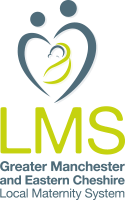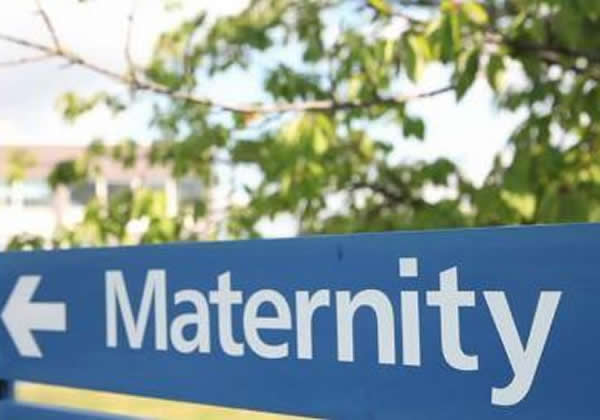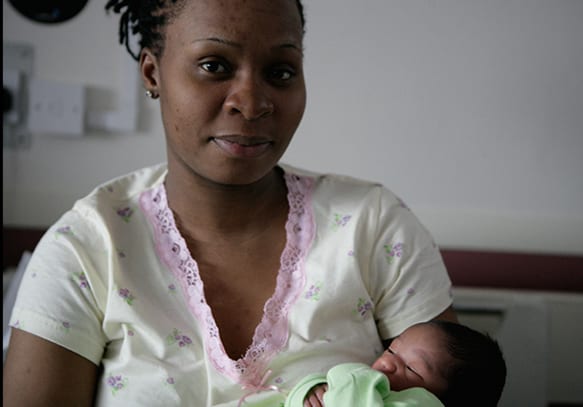Stages of Labour
There are 3 different stages in labour:
- The First stage starts with the onset of regular contractions along with the dilation or opening of the cervix and ends when the cervix is fully open, said to be 10cm.
- The Second stage, often known as the ‘pushing’ stage, starts from when the cervix is at 10cm and ends when the baby is born.
- The Third stage is from the birth of the baby to when the placenta is delivered.
The topics below will provide you with information about the different aspects of labour and link to some further resources that you can explore.
Remember, if you have any concerns, for example if you are unsure whether you are in labour, your baby’s movements have changed or you think your waters have broken, you can always speak to a midwife, using the contact numbers on your maternity notes.
Have a look at the video below for a demonstration of what happens during labour.
This video from Tommy’s will also give you some idea of what happens to your cervix during labour:
The information and different videos below will help you learn more about labour.
Signs of labour
This video and the information graphic below will give you an overview of what signs to look out for.
Braxton Hicks contractions
Waters breaking
What is the mucus plug?
Find out more at NHS – Labour signs.
Early labour
Staying at home for as long as possible can help you through the early stage of labour. There are also many other ways you can help yourself:
It is a good idea to try and stay mobile and upright. Upright positions such as standing (or leaning onto a steady surface), sitting on a birthing (exercise) ball are good options. This is because gravity helps your baby’s head to move down into the pelvis and helps labour to progress. If you are in a birth centre in the early stages, there may be a birthing stool that you can use to sit on as it is designed to keep you in the right position. Choosing to be mobile and adopting these positions if you find them comfortable has been found to make labour shorter and reduce the chance of needing a caesarean section.
Movement, such as rocking your hips (you can also do this on all fours), pacing, or moving between positions can be helpful in coping with pain. As you find more comfortable positions, it helps you to feel in control of your labour and helps to avoid feelings that you need an epidural or other stronger pain relief.
Labour consumes a lot of energy and you need to keep yourself well and look after your body. It is a good idea to drink water to keep your energy levels up and this is important throughout pregnancy as well as labour. If you do get dehydrated, you may become exhausted and your labour may stop progressing.
Energy levels may also be improved by eating, although your appetite tends to reduce when in labour, so small snacks may be preferable. Try eating small light meals containing carbohydrates, such as banana, toast, fruit, pasta or cereals. You may be advised not to eat during labour in some circumstances; your midwife will discuss this with you. Isotonic drinks (such as lucozade sport/powerade or any other electrolyte non-fizzy drink) can help to keep your energy levels up.
Resting during early labour and between contractions can help to prevent you from getting exhausted when in labour. Try playing relaxing music and dim the lights to aid relaxation and sleep.
Remember to keep going to the toilet at regular intervals, as a full bladder may prevent baby from moving down into the pelvis.
Staying calm and relaxed will help the hormone Oxytocin (responsible for labour progress) to flow. Keep your breathing slow, deep and steady through each contraction. Gently blowing by pursing your lips as you breathe out can help.
Take mild painkillers. Paracetamol can be taken at home you can take 1g (which is usually 2 tablets) 4-6 hourly and no more than 4g or 8 tablets in 24 hours.
During this stage it is important to choose a supportive birthing partner who can be with you throughout your labour. Choosing the right birthing partner will have an impact on your birth experience and it is good to have someone you can trust and feel comfortable with. Your birthing partner can encourage and reassure you throughout your birthing journey. It will also be an unforgettable memory you both hold dear to your hearts.
First stage of labour
First stage of labour - Active Phase
Find out more about the active first stage of labour at the Babycentre.
Positions for birth
In early labour, you may feel restless and want to move around and keep busy as a way of distracting yourself from your contractions.
However, during this time you should try your best to get as much rest as possible before the contractions become stronger and more frequent. You will need plenty of energy later on.
Once your contractions become more regular, you may wish to stay mobile and upright. This may help you to cope with the contractions, and it is also really beneficial in helping your baby to move further down the birth canal in preparation for birth, thus helping to progress labour.
Sitting upright on a birthing (exercise) ball does help your baby to move down further down the pelvis, as well as easing back pain and increasing the blood flow to your pelvic area.
Any upright birthing positions are recommended for the same reasons. It is important that you move into any position you find comfortable and this may change throughout labour.
You may wish to lean against a wall or the back of a chair, kneel on a cushion, sit on a chair or birth ball, go on all fours, or lean on your partner. You may wish to try these with your partner at home if it helps you to experience it, ready for when your day arrives.
You may also wish to go and look at some pictures online that demonstrate the many different positions which may help you in labour. This poster gives you an idea of some birth positions – click to enlarge it.
Many hospital trust websites now provide information regarding pain relief options as well as having visual aids of popular birthing positions, so please, so ask your midwife about this.
Second stage of labour
This stage of labour lasts from when your cervix is fully dilated until the birth of your baby.
At this stage your contractions are frequent and strong. They will have done their job by thinning and opening your cervix fully so that baby can pass through. As your cervix has been opening, the contractions have also been gently pushing baby down into your pelvis and baby’s head is usually quite low in the pelvis at this stage.
Sometimes this can give you an urge to push or bear down and might feel a bit like you need to poo. Don’t worry, this is exactly what should be happening as it helps you to direct your pushing into the right place. Sometimes you might feel like pushing before your cervix is fully dilated and the midwife might try to support you to try other positions so that the urge lessens until the cervix is ready.
Many women will require pain relief during the second stage and this can vary from a warm water bath or pool to an epidural – please see our other topics on the website for further details. If you have had an epidural, you may not feel an urge to push at all once the cervix is fully open, but the midwife will be able to guide you.
It is important to find a comfortable position for the pushing part of the second stage as this will help you to get the most out of your contractions and pushes. Your midwife will help you find a comfortable position to give birth in. You may want to sit, lie on your side, stand, kneel, or squat, although squatting may be difficult if you’re not used to it. If you’ve had lots of backache while in labour, kneeling on all fours may help. It’s a good idea to try some of these positions before you go into labour. Talk to your birth partner so they know how they can help you.
If you’re having your 1st baby, this pushing stage should last no longer than 3 hours. If you’ve had a baby before, it should take no more than 2 hours. This stage of labour is hard work, but your midwife will help and encourage you. Your birth partner can also support you.
For more information on the second stage of labour, check out the links below:
Third stage of labour
The 3rd stage of labour happens after your baby is born, when your womb contracts and the placenta comes away from your womb. As it comes away, your midwife will pull on the cord – which is attached to the placenta – and pulls the placenta out through your vagina. This usually happens within 30 minutes of your baby being born.
There are 2 ways to manage this stage of labour, the first is ‘active third stage’, where a drug is given by the midwife by injection to make the process happen faster, between 1 and 5 minutes after the baby is born, or ‘physiological third stage’, where you have no treatment and this stage happens naturally at a slower pace. Your midwife will explain both ways to you while you’re still pregnant or during early labour, so you can decide which you would prefer.
There are some situations where physiological management is not advisable. Your midwife or doctor can explain if this is the case for you.
For more information on the third stage of labour, check out the links below:








